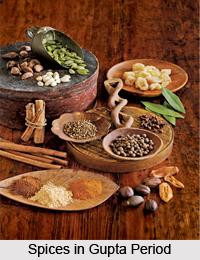The Gupta Period, flourishing around 320 to 550 CE in India, was marked by significant advancements in culture, art, and science, including the realm of culinary practices. This era is illuminated by the literary works of noted playwrights such as Kalidasa, as well as texts like "Angavijja" and the "Bharata Samhita," which provide insights into the dietary habits of the time. The diet in the Gupta Empire was diverse, primarily characterized by both vegetarian and non-vegetarian foods. This variety was influenced by the prevailing religious beliefs, particularly Buddhism and Jainism, which promoted vegetarianism among their adherents.
Cereals, vegetables, fruits, and dairy products formed the cornerstone of the Gupta diet, with regional variations based on local agriculture. Non-vegetarian foods, including meat and fish, were consumed depending on geographical location and individual practices. Significant culinary contributions during this period arose particularly in Bengal, where unique food preparations emerged, such as the Mahavrihi rice variety.
The Gupta Period also witnessed innovations in sugar production, where sugarcane juice was ingeniously transformed into sugar cubes. Various spices, including myrobalan, long pepper, black pepper, clove, cardamom, and turmeric, were cultivated along the coasts, while asafoetida was imported from Afghanistan. Beverages mentioned in ancient texts like the Matsya Purana and Vayu Purana were often concocted from grapes, sugarcane, honey, and rice.
Cooking techniques of the Gupta Period reflected a significant leap in the sophistication of Indian civilization, utilizing vessels crafted from gold, silver, and other metals, indicative of a society that had progressed from primitive to refined culinary practices. This rich tapestry of food culture during the Gupta era continues to influence Indian cuisine today.

